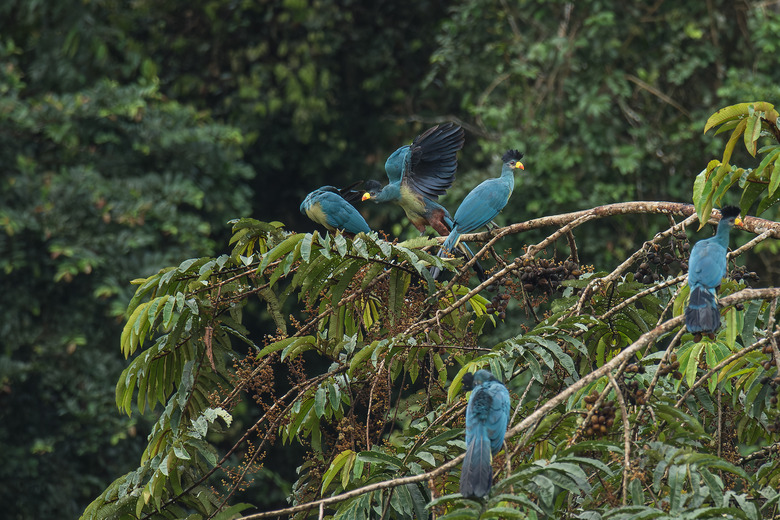How Are Birds & Reptiles Alike?
At first glance, there are countless differences between birds and reptiles. Birds have feathers, can fly, and are warm-blooded, while reptiles have scales, cannot fly, and are cold-blooded. However, there are similarities, starting with the fact that both birds and reptiles have descended from dinosaurs.
Relationship to dinosaurs
Relationship to dinosaurs
Both birds and reptiles have a common ancestry with dinosaurs and are members of the group Diapsida. The closest reptile relation to birds is the crocodile. While there was little dispute that reptiles were ancestors of dinosaurs, it wasn't until 1860, with the discovery of the birdlike dinosaur Archaropteryx lithographica, that the theory that birds and reptiles are related had physical evidence. Since then, many theropod dinosaurs have been discovered that share traits with birds, such as hollow bones and feathers.
Both birds and reptiles have scales
Both birds and reptiles have scales
Reptiles are known for their rough, scaly skin. The scales on the body not only offer physical protection to the reptile but they also prevent water loss that leads to dehydration.
At first glance, birds don't seem to have any similar skin when compared to reptiles. Most of their body is covered with feathers that allow for flight and insulation. However, a closer look reveals that birds do, in fact, have scales on their feet that are very similar to those found on reptiles. Both scales and feathers are adaptations that develop from epithelial, or skin, cells.
Similar reproductive systems
Similar reproductive systems
There are many similarities in the ways that birds and reptiles reproduce. Both birds and reptiles fertilize eggs internally. Both types of animals have an opening called a cloaca. This opening is where eggs, sperm, and bodily waste travels in the body. Male birds and reptiles will deliver sperm to the female's cloaca.
Birds and turtles and some other reptiles lay eggs through the cloaca that then hatch live young. Not all reptiles do this, however. Some species give birth to live young.
There are, of course, many differences. Birds lay eggs with hard shells, and they feed and protect their young. In addition, most bird species are monogamous, and mates stay together to care for the eggs. Most reptile species do not care for their eggs or young. When the babies hatch, they must survive on their own.
Red blood cell anatomy
Red blood cell anatomy
Red blood cells are responsible for carrying oxygen from the lungs to cells throughout the body and then carrying carbon dioxide waste from the body back to the lungs to be exhaled from the body. These cells are red due to the molecule called heme, which contains iron and transports oxygen. In humans, these are simple cells that lack a nucleus and other parts that are normally found in most cells. The lack of a nucleus is what allows the cell to take its unique, biconcave shape.
Both birds and reptiles have red blood cells that contain a nucleus. This means that the cells have an oval shape. The DNA in the nuclei determines how large the cells can get. Smaller red blood cells are advantageous, as they allow more oxygen to be transported throughout the body.
References
- Arizona State University Ask a Biologist: If Birds Evolved From Dinosaurs, Would That Make Them Reptiles Too?
- Clyde Peeling's Reptiland: How Birds and Reptiles Are Related
- NCBI: Evo-devo of Feathers and Scales: Building Complex Epithelial Appendages
- University of Gerogia: Traits of Reptiles and Amphibians
- Flex Books: Bird Reproduction
- Flex Books: Reptile Reproduction
- Fleet Science Center: Red Blood Cells, Large and Small!
